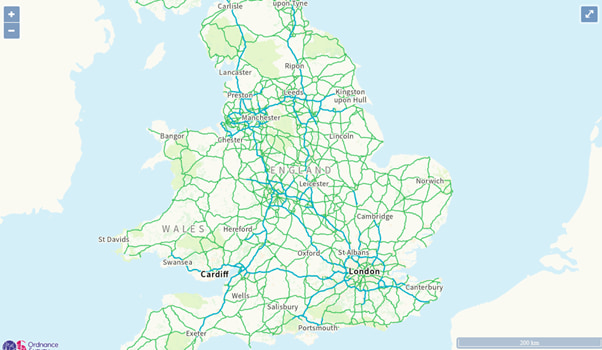It's no secret that severe weather can cause major problems for construction projects. From delays and disruptions to complete destruction, weather can wreak havoc on even the best-laid plans. That's why it's important to have an adverse weather strategy in place before things get too chaotic.
Dangers of Severe Weather: Why Your Business Needs a Weather Plan
As a construction professional, you know that severe weather can pose a serious threat to your operations. Let's examine some common dangers of inclement weather:
- Flooding is one of the most common types of severe weather, and it can cause a great deal of damage to construction sites. Flood waters can damage buildings, equipment, and inventory, and they can also lead to power outages and road closures.
- High winds can also cause significant damage to businesses. Strong winds, winter storms and severe thunderstorms can topple trees and power lines, damage roofs and signage, and cause flying debris to break windows.
- Extreme heat can be another hazard for construction projects during the summer months. Prolonged exposure to high temperatures can cause concrete to cure too fast and crack. Cold temperatures also interfere with the curing of concrete. On the personal safety aspect, extreme heat can lead to heat exhaustion and heat stroke in workers, and it can also damage equipment.
- Winter weather can also pose a number of risks to businesses. Heavy snow, ice and freezing rain can make roads and sidewalks treacherous, and they can also lead to power outages and disruptions in supply chains.
Given the dangers that adverse weather conditions pose, it's absolutely essential that your business has a plan in place to deal with it.
Tips and Best Practices for Planning Construction Projects Around Inclement Weather
So, how can you plan for inclement weather and minimize its impact on your construction project? Here are some tips and best practices:
Know the risks
The first step in developing a weather policy is to understand the types of adverse weather conditions that could impact your business. If you're located in a flood-prone area, for example, you'll need to be prepared for the possibility of flooding. In the UK, you can check if you are in a flood risk area by checking the UK Government's Flood Risk Map.

(Image source: gov.uk)
If you're in an area that's prone to hurricanes, on the other hand, you'll need to have a hurricane plan in place. Knowing the risks will help you develop the right plan for your business.
Make Use of Long-Range Weather Forecast Tools and Alerts
Weather forecasting tools can help you plan and adjust your construction schedule accordingly. The advantage of a long-range weather forecasting service is that it can provide you with an overall weather forecast for an extended period of time, allowing you to plan and make adjustments in advance.
You can also set up weather alerts so that you are notified if there is a severe weather event approaching.
Have a Communication Plan in Place
In the event of severe weather, it's essential that you have a clear plan for communication between all members of your team. This includes having designated individuals to make weather-related decisions and clearly outlining who should be notified in the event of inclement weather.
Have a Plan
Once you know the risks, you need to develop a plan to deal with them. Your plan should include steps for dealing with power outages, damaged buildings, and flooded roads. You should also stock up on emergency supplies for your construction workers, such as water bottles, first aid kits, and flashlights.
Stay Up-to-date on the Forecast
One of the most important parts of your weather policy is staying up-to-date on the forecast. This way, you'll know when severe weather is headed your way and can take steps to prepare for it. There are a number of ways to stay up-to-date on the forecast, including downloading a weather app or signing up for alerts from the Met Office, UK's national weather service.
Put Your Plan into Action
When severe weather hits, it's important to put your plan into action quickly and efficiently. This may mean evacuating your building or shutting down operations until the danger has passed. By following your plan and taking quick action, you can minimize the impact of severe weather on your business.
Developing a Weather Policy with EHAB Weather Risk Management Platform
While having a weather strategy is a must-have for any construction project, especially in the era of climate change, where the weather is increasingly unpredictable and extreme. However, getting it done isn't always easy. It is an extra burden to your workforce that you can do without. That's where the EHAB weather risk management platform comes in handy. The Planner lets you forecast weather risk years in advance or for your 4-week look ahead.
This intelligent software takes into account a wide range of variables to give you the most accurate forecast possible. As a result, you can plan your construction projects with confidence, knowing that you've accounted for the potential impact of weather risks. The tool is available for the most complex infrastructure projects to the simplest maintenance jobs and provides value at every stage of the project lifecycle.
Save time and money on your next construction project with the EHAB weather risk management platform. For more information, sign up for a free 30-minute demo.



